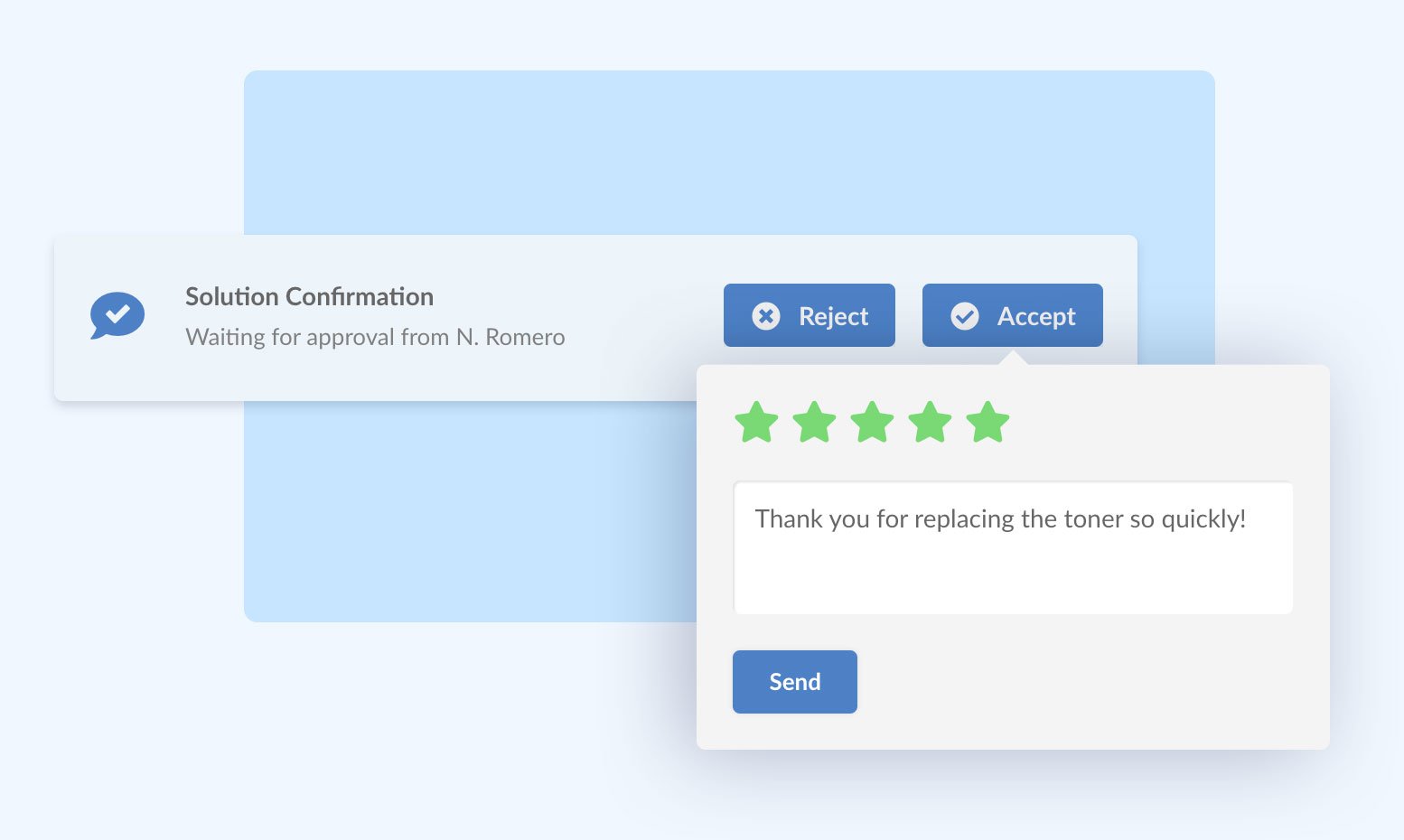Let's start with a question. How valuable is it to know how a company's customers interact with its services and products? Very valuable, right? One thing is for sure: Businesses must prioritize their customer experience to foster loyalty and ensure long-term success. One crucial metric that helps achieve this is the Customer Effort Score (CES).The Customer Effort Score measures the ease with which customers can interact with a company's services, providing valuable insights into the customer journey. This article will explore what CES is, why it's essential, and how it can be effectively utilized to enhance customer satisfaction and loyalty.
Understanding and implementing customer effort scores can significantly improve your customer service team's performance and, ultimately, your business's success.
From measuring CES to applying it in your customer experience strategy, we'll cover everything you need to know about this critical metric.

What is Customer Effort Score (CES)?
The Customer Effort Score (CES) is a help desk metric used to gauge the amount of effort a customer has to exert to get an issue resolved, a question answered, or a service fulfilled.
This score is obtained by asking customers to rate the ease of their interaction with the company on a scale, typically from 1 to 7. The lower the effort required, the better the experience, which is crucial for fostering customer loyalty.
Unlike other metrics, CES focuses on the customer's experience in terms of effort rather than satisfaction or loyalty. This unique perspective helps businesses identify and address pain points in their customer service touchpoints, leading to a smoother and more efficient customer journey.
Why is CES important in Information Technologies?
The Customer Effort Score is essential because it directly correlates with customer loyalty. Research shows that customers who experience low effort during their interactions with a company are more likely to return and recommend the business to others. In contrast, high-effort experiences can lead to customer dissatisfaction and churn, even if the overall service quality is good.
By focusing on reducing customer effort, businesses can improve their customer retention rates and build long-term relationships with their clients. A low CES indicates that a company values its customers' time and strives to provide a hassle-free experience, which can be a significant competitive advantage.
How is CES measured?
Measuring the Customer Effort Score involves a straightforward process. After a customer interaction, a survey is sent to the customer, asking them to rate the ease of their experience on a scale from 1 (very difficult) to 7 (very easy). The CES survey responses are then averaged to determine the overall CES. In a nutshell, here are the steps:
-
Designing the CES survey: The survey should be concise and straightforward, focusing on the key interaction points. Typically, the primary question might be, "How easy was it to handle your issue today?"
-
Collecting responses: The CES survey is sent immediately after the customer interaction, ensuring the experience is fresh in the customer's mind. This prompt feedback is crucial for accurate measurement.
-
Analyzing the data: The responses are averaged to calculate the overall CES. This score helps identify areas where the customer experience can be improved.

Creating a Customer Effort Score surveys
Creating effective Customer Effort Score (CES) surveys involves careful planning and execution. A well-designed survey can provide valuable insights into the customer experience and highlight areas for improvement. Here are the steps to create a CES survey:
1. Designing the CES survey
The first step in creating a CES survey is designing the questionnaire. The CES survey should be concise and focused, asking only essential questions that help gauge the customer's effort.
Typically, the main question revolves around the ease of the customer's interaction with your service or product. Keep the survey simple to encourage more responses and ensure accurate feedback.
Example question: "On a scale of 1 to 7, how easy was it to resolve your issue today?".
2. Collecting responses
Once the CES survey is designed, the next step is to collect responses from your customers. Timing is crucial; sending the CES survey immediately after a customer interaction ensures that their experience is fresh in their mind.
Use various channels such as email, SMS, or in-app prompts to reach customers. Providing an incentive, like a discount, entry into a prize draw, or even offering paid surveys, can also increase response rates.
3. Analyzing the data
The last step is the Customer Effort Score calculation. Basically, how to measure customer effort. After collecting responses, analyze the data to determine your overall CES. This involves calculating the average score and identifying trends or common pain points.
Use this data to make informed decisions about where to focus your efforts to reduce customer effort. Regularly review and update your CES survey process based on feedback and changing business needs to maintain its effectiveness.
Example of how Customer Effort Score is measured
Consider an e-commerce company that wants to measure its Customer Effort Score after customers complete a purchase. The company sends a follow-up email asking, "How easy was it to complete your purchase today?" or “How much effort did you personally have to put forth to handle your request?”.
Customers rate their experience on a scale from 1 to 7. The company then averages these scores to find the overall CES. If most customers follow up questions rate the experience as 6 or 7, the company knows it is doing well. However, if the scores are lower, the company can investigate and address specific issues in the purchasing process.
What is a good Customer Effort Score?
A good Customer Effort Score typically falls in the range of 5 to 7. Scores in this range indicate that customers find their interactions with the company relatively easy and straightforward. However, it's essential to consider industry benchmarks and internal goals when determining what constitutes a good CES for your business.
In general, the higher the CES, the better. A high score suggests that the company is successfully minimizing customer effort, leading to higher satisfaction and loyalty. Conversely, a low CES indicates areas where improvement is needed to enhance the customer experience. You will want to avoid a high effort service interaction.
When should CES be utilized?
The Customer Effort Score should be utilized at key points in the customer journey, particularly after significant interactions that could impact customer satisfaction and loyalty. These interactions might include:
-
Post-purchase surveys: Assessing the ease of the purchasing process.
-
Customer support follow-ups: Evaluating the effort required to resolve issues.
-
Onboarding processes: Measuring the simplicity of starting with a new product or service.
Using Customer Effort Score at these critical touchpoints helps businesses pinpoint areas for improvement and ensures that customer experiences are consistently smooth and effortless.
-2.png)
Where does CES fit in Customer Experience Management?
In the broader context of Customer Experience Management (CEM), CES plays a crucial role in identifying friction points in the customer journey. While other metrics like Net Promoter Score (NPS) and Customer Satisfaction (CSAT) provide insights into customer loyalty and satisfaction, CES specifically highlights the effort required by customers during their interactions with the company.
By integrating CES with other customer experience metrics, businesses can gain a comprehensive understanding of their customer interactions. This holistic approach enables companies to create strategies that not only satisfy but also delight their customers by minimizing effort and maximizing positive experiences.
Difference with other metrics
While the CES score is a powerful metric, it's essential to understand how it differs from other commonly used customer experience metrics like Net Promoter Score (NPS) and Customer Satisfaction (CSAT). Each of these metrics provides unique insights into different aspects of the customer experience.
Difference with NPS
The Net Promoter Score (NPS) measures customer loyalty by asking how likely customers are to recommend the company to others. While NPS focuses on future behavior and overall satisfaction, CES specifically measures the ease of a single interaction.
NPS is useful for understanding long-term loyalty trends, but CES provides immediate, actionable insights into specific pain points in the customer journey. By using both metrics, businesses can gain a comprehensive view of customer loyalty and experience.
Difference with CSAT
Customer Satisfaction (CSAT) measures overall satisfaction with a product or service, typically using a scale from 1 to 5. While CSAT provides a broad understanding of customer happiness, CES zeroes in on the effort required for specific interactions. So, CSAT is a customer satisfaction score.
CSAT can highlight general satisfaction levels, but CES offers a more focused perspective on how easy it is for customers to achieve their goals. Combining these metrics can help businesses address both satisfaction and effort-related issues.

Another CES
There are many different Customer Effort Scores besides CES, other ways to measure customer effort, each providing different insights. These might include:
-
Customer Effort Score 2.0: An enhanced version of CES that includes more detailed questions about the interaction.
-
Ease of use scores: Specific scores for individual product features or services, helping to pinpoint exact areas of improvement.
Exploring these additional metrics can give businesses a more nuanced understanding of customer effort across different areas.
The impact of Customer Effort Score on business success
Understanding and optimizing CES can yield tangible benefits for businesses operating in the IT sector. By reducing customer effort, organizations can increase customer loyalty, drive repeat business, and ultimately boost profitability.
Moreover, by addressing pain points identified through CES feedback, businesses can enhance operational efficiency and deliver a seamless customer experience, thereby gaining a competitive edge in the market. Ultimately, focusing on customer effort can create a competitive advantage, driving long-term success and profitability.
8 Benefits of Using Customer Effort Score
1. Increased customer loyalty
Using the Customer Effort Score (CES) can significantly boost customer loyalty. When customers find it easy to interact with your company, they are more likely to return and continue using your services. A high CES indicates that you prioritize customer convenience, which strengthens the bond between your customers and your brand, leading to repeat business and long-term loyalty.
Reducing effort in customer interactions can turn satisfied customers into loyal advocates. These loyal customers are more likely to recommend your business to others, providing valuable word-of-mouth marketing and helping to attract new customers.
2. Enhanced customer satisfaction
The Customer Effort Score directly impacts customer satisfaction. When customers experience a low-effort interaction, their overall satisfaction with your company increases. This positive experience can lead to higher customer satisfaction scores and more favorable reviews.
Satisfied customers are not only more likely to return but also tend to share their positive experiences with others. By focusing on reducing customer effort, you can enhance overall satisfaction and build a positive reputation for your business.
3. Improved customer retention
A high Customer Effort Score is closely linked to improved customer retention rates. Customers who encounter low-effort experiences are less likely to switch to competitors, even if they offer similar products or services. This is because convenience and ease of interaction play a significant role in customer decisions.
Retaining customers is more cost-effective than acquiring new ones. By focusing on CES and reducing effort, you can improve retention rates, ensuring that your existing customer base remains loyal and engaged with your brand.
4. Better customer insights
The Customer Effort Score provides valuable insights into specific areas where customers face difficulties. By analyzing CES data, you can identify pain points in the customer journey and address them proactively. This targeted approach helps in making precise improvements that directly impact customer experience.
Understanding where customers encounter challenges allows you to make data-driven decisions. This leads to more effective strategies for enhancing customer interactions and overall satisfaction, ensuring that your efforts are focused on the most critical areas.
5. Increased efficiency in customer service
Implementing Customer Effort Score surveys can lead to increased efficiency in your customer service team. By identifying common issues and areas where customers struggle, you can streamline processes and provide your team with the tools and training they need to resolve issues more effectively.
A more efficient customer service team can handle inquiries faster and more accurately, reducing the effort required from customers. This not only improves the CES but also enhances the overall productivity of your customer service operations.
6. Competitive advantage
A high Customer Effort Score can give your business a competitive advantage. Companies that prioritize reducing customer effort stand out in the market, attracting customers who value convenience and ease of interaction. This can differentiate your brand from competitors who may not focus as heavily on minimizing effort.
By consistently delivering low-effort experiences, you can build a reputation for exceptional customer service. This reputation can attract new customers and retain existing ones, giving your business a strong competitive edge in the industry.
7. Increased customer lifetime value
Reducing customer effort through a high Customer Effort Score can increase the lifetime value of your customers. Satisfied and loyal customers are more likely to make repeat purchases, spend more over time, and engage with your brand in meaningful ways.
Focusing on CES helps ensure that customers have positive experiences at every touchpoint, leading to higher lifetime value. This increased value can contribute to the long-term success and profitability of your business.
8. Enhanced Customer Experience Management
Integrating the Customer Effort Score into your Experience Management strategy can enhance your overall approach to managing customer interactions. CES provides a specific metric that highlights areas for improvement, allowing you to make targeted changes that enhance the customer experience.
By regularly measuring and analyzing CES, you can create a more customer-centric approach to your business. This ensures that every aspect of the customer journey is optimized for ease and convenience, leading to higher satisfaction and loyalty.
Focusing on customer loyalty
Reducing customer effort is directly linked to increasing customer loyalty. When customers find it easy to interact with a company, they are more likely to return and recommend the business to others.
A high Customer Effort Score indicates that a company prioritizes customer service altogether convenience, which is a significant factor in building loyal customer relationships. Loyal customers are valuable assets to any business. They tend to make repeat purchases, provide positive word-of-mouth referrals, and are more forgiving of occasional service lapses.
By focusing on minimizing customer effort, businesses can create a loyal customer base that supports long-term growth and success.
Building your customer service team
A crucial aspect of improving your Customer Effort Score is building an effective team. Think about the ideal customer service representative. And how are you going to get there. Your team should be trained to handle inquiries efficiently, resolve issues promptly, and communicate clearly with customers. Key strategies include:
-
Comprehensive training: Ensure that your customer service representatives are well-versed in your products and services and can handle a wide range of issues.
-
Empowering staff: Give your team the authority to make decisions and solve problems without unnecessary escalation, reducing the effort required from customers.
-
Continuous improvement: Regularly review performance and provide feedback to help your team improve their skills and reduce customer effort.
By focusing on these areas, you can build a customer service team that significantly enhances your CES and overall customer experience.
Final thoughts
In conclusion, the CES score is a vital metric for understanding and improving the customer experience. By focusing on minimizing effort, businesses can enhance customer satisfaction, increase loyalty, and drive long-term success. Implementing CES effectively involves measuring it at key touchpoints, integrating it with other metrics, and continuously striving to reduce customer effort.
To get started with CES, consider incorporating it into your existing customer feedback processes and using the insights gained to make data-driven improvements. Remember, a low-effort customer experience is not just a nice-to-have but a critical component of a successful business strategy.
Frequently Asked Questions (FAQs)
1) How often should we measure Customer Effort Score?
It's best to measure CES after significant customer interactions, such as purchases, support calls, or onboarding processes.
2) Can CES be used alongside other metrics?
Yes, CES can be used in conjunction with NPS and CSAT to provide a comprehensive view of the customer experience.
3) What is a good Customer Effort Score?
A good CES typically falls between 5 to 7, indicating that customers find their interactions with your company easy and straightforward.
4) How can we improve our Customer Effort Score?
Focus on training your customer service team, simplifying processes, and promptly addressing any identified pain points to reduce customer effort.















